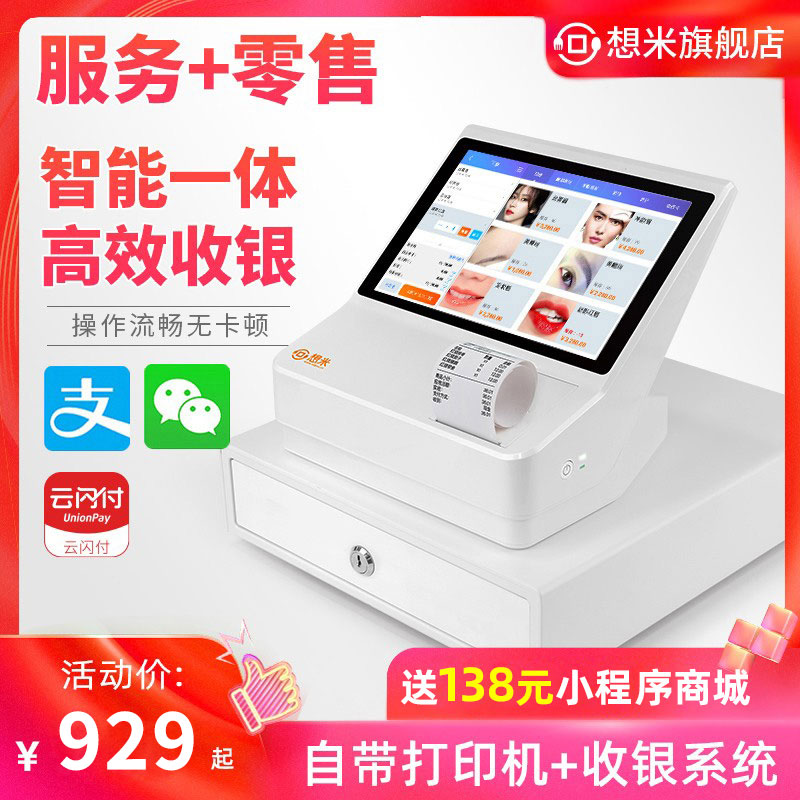高效收银:办公设备中收银机的使用技巧
甙邵登峰
2024-10-30 18:29:00
0次
高效收银:办公设备中收银机的使用技巧
在现代化的商业环境中,收银机已经成为办公室和零售店不可或缺的办公设备之一。它不仅提高了收银效率,还为商家提供了更便捷、更准确的财务管理方式。以下是一些关于收银机的使用技巧,帮助您更高效地进行收银工作。
一、收银机的基本操作
1. 开机与关机:按照设备指示进行开机和关机,确保设备正常运行。
2. 输入商品信息:通过扫描商品条形码或手动输入商品编号,快速录入商品信息。
3. 结算与支付:根据顾客所选商品和支付方式,进行快速结算和收款。
4. 打印小票:完成交易后,打印出交易小票,方便顾客核对和留存。
二、收银机的使用技巧
1. 熟练操作:掌握收银机的基本操作和功能,如扫描、输入、结算等,以提高操作速度和准确性。
2. 条形码扫描技巧:在扫描商品时,保持扫描窗口与条形码平行,避免多次扫描导致错误。
3. 高效管理:合理安排商品的分类和摆放,提高收银效率。同时,定期清理收银机,确保设备正常运行。
4. 及时更新商品信息:确保收银机中的商品信息与实际库存相符,避免因信息错误导致的收款问题。
5. 多语言支持:根据实际需要,设置多语言支持功能,方便不同语言的顾客进行交易。
三、常见问题的处理
1. 商品信息错误:如发现商品信息错误,应及时与顾客沟通,进行更正并重新结算。
2. 支付问题:如遇到支付问题,如余额不足、支付失败等,应耐心与顾客沟通,协助其解决问题。
3. 设备故障:如遇设备故障,应立即停止使用并通知维修人员进行处理。同时,准备备用设备以确保收银工作不受影响。
高效收银:Office Equipment - Cash Register Usage Skills
In the modern business environment, cash registers have become one of the indispensable office equipment in offices and retail stores. It not only improves the efficiency of cashiering but also provides businesses with a more convenient and accurate way of financial management. Here are some tips for using cash registers to help you perform cashiering work more efficiently.
I. Basic Operations of Cash Registers
1. Power on and off: Follow the instructions to start and shut down the device to ensure its normal operation.
2. Input product information: Quickly enter product information by scanning the barcode or manually entering the product code.
3. Settlement and payment: Perform quick settlement and collection according to the selected products and payment methods of customers.
4. Print receipts: After completing the transaction, print out the transaction receipt for customers to check and keep. II. Tips for Using Cash Registers 1. Proficient operation skills: Master the basic operations and functions of the cash register, such as scanning, inputting, settlement, etc., to improve operating speed and accuracy. 2. Barcode scanning skills: When scanning products, keep the scanning window parallel to the barcode to avoid multiple scanning errors. 3. Efficient management: Arrange product categories and placement reasonably to improve cashiering efficiency. At the same time, regularly clean the cash register to ensure its normal operation. 4. Timely update product information: Ensure that the product information in the cash register is consistent with the actual inventory to avoid payment problems caused by incorrect information. 5. Multi-language support: Set up multi-language support functions according to actual needs to facilitate transactions for customers speaking different languages. III. Handling Common Problems 1. Product information error: If a product information error is found, communicate with the customer in a timely manner, make corrections, and re-settle the transaction. 2. Payment issues: If there are payment issues such as insufficient balance or payment failure, communicate with the customer patiently and assist them in resolving the problem. 3. Equipment failure: If there is equipment failure, immediately stop using it and notify the maintenance personnel to handle it. At the same time, prepare a spare device to ensure that cashiering work is not affected.相关内容
热门资讯
收银机使用指南,让您的办公更高...
收银机使用指南摘要:本指南详述了收银机开机登录、商品录入、结账、打印小票、退款优惠及交班日结等步骤,...
高效、便捷的办公设备——收银机...
本文介绍了收银机的使用方法与常见功能,包括商品录入、价格查询、交易结算、打印小票等,并提供了操作技巧...
从零到精通:操作使用收银机的方...
文章摘要:本文详述了从零到精通操作使用收银机的方法,包括了解基础、学习基本操作、掌握进阶操作、实践与...
高效、便捷的办公设备——智能收...
智能收银机使用教程:高效便捷的办公设备,可快速完成商品销售、结算和支付。教程涵盖开机登录、商品录入、...
办公室的得力助手——多功能收银...
多功能收银机指南:简述了开机设置、商品录入管理、收银操作、其他功能及维护保养方法。它是现代办公室得力...
轻松上手:小白也能掌握的办公收...
本指南为办公收银机小白提供快速上手操作方法,包括开机登录、基本操作和注意事项等。指导用户轻松掌握商品...
办公好帮手:收银机操作教程与常...
本文介绍了收银机操作教程与常见问题解答,包括开机初始化、商品录入、结账流程、退款与促销管理以及交班与...
快速上手:收银机操作教程及常见...
收银机教程:开机登录、界面认识、商品录入结账、退款作废及报表统计。常见问题:登录、扫描枪、结账支付、...
全新一代办公必备:智能收银机使...
本文介绍了智能收银机的使用指南,包括其简介、使用步骤和功能特点。智能收银机可高效结账、支持多种支付方...
从入门到精通:收银机使用指南
本文详细介绍了从入门到精通使用收银机的指南,包括基本构造、功能、操作、退换货处理及报表统计等。还介绍...



